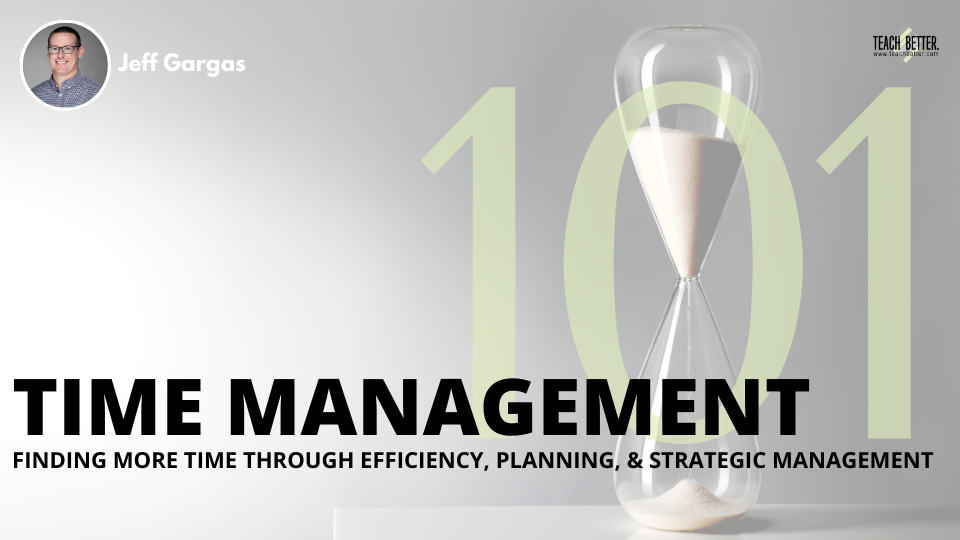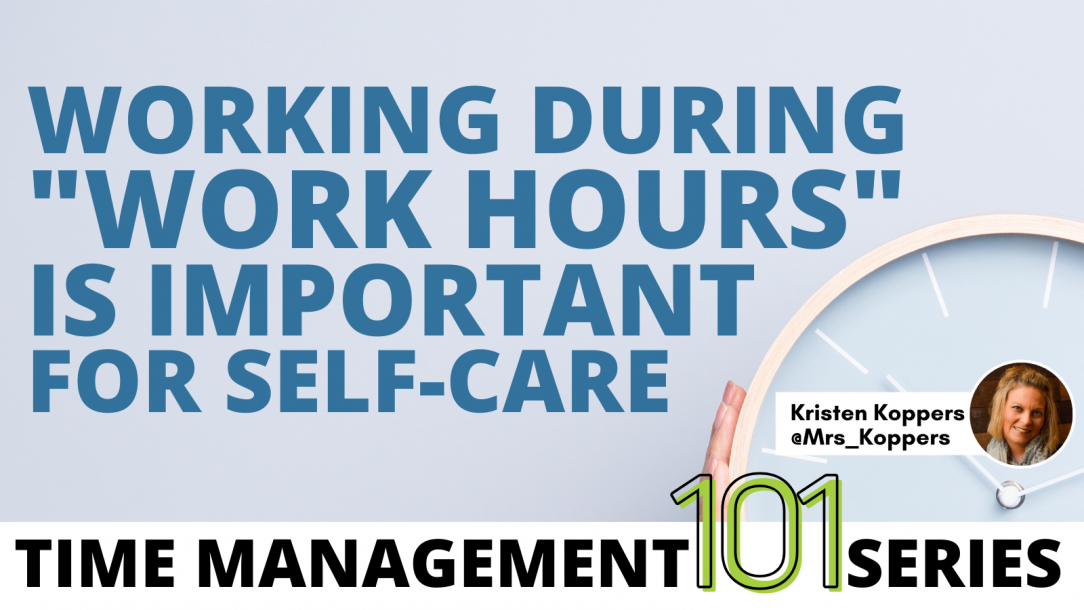TL:DR:
- Face-to face, hybrid, and remote teaching all have their respective challenges.
- Bringing work home seems to be a part of the job as an educator. Set boundaries for yourself and dedicate time for yourself and your self-care.
- Prioritizing self-care is a necessary component of your time management plan.
When the option to choose remote teaching versus in person, I thought that teaching remotely would be easier. I wouldn’t have to take my temperature every day. I wouldn’t have to find a mask to wear and drive to school to prepare for teaching. The mere fact that I could walk across the hall to my new classroom (aka den/toy room) was easy. But it didn’t take long for me to realize how much harder it is to teach remotely than in person. I learned I had to rethink my time management and start building in time for self-care.
Whether or not I was up early, I did not go into the 'classroom' to turn on my computer and begin work for the day. Instead, I focused on myself and my self-care. Click To TweetManaging Technology
Up until I had my second monitor to teach, the teaching aspect was difficult. I was trying to figure out how to have several websites open, my Zoom class, sharing the same screen, and manipulating how to teach the PowerPoint or other material all on one screen.
It felt like the whole world of crazy was upon me and by the end of the class period (not even the day), I didn’t know where I was or what I was doing. And this only lasted a week. I could not imagine continuing to teach virtually with one monitor all semester long.
Having the second monitor felt like a weight was lifted off my shoulders. While the work was still piling up, I was able to utilize my time better with the websites, see my Zoom class on one screen, and be able to teach a PowerPoint or other material without problems. The double screen definitely helped organize not only my lessons but being able to visually see my students without another screen hiding them.
But that was only one of the problems that occurred during the short time of remote learning.
With face-to-face teaching, I created lesson plans, made copies, and taught the class until the bell each day. Students would often lead the conversations, bring up interesting questions, or I would be able to help them individually while the class was working. As upsetting as it was, I knew we would not be going back to the school full time this semester.
Even the thought of hybrid classes was challenging. Students were divided into cohorts (or sections) and the same lesson would be taught two or three times a week. We had meetings as a whole class the other days of the week with new lessons. This seemed somewhat easy, where I only had to create three lessons each week.
At least that’s what I thought. The remote teaching schedule was the same way except instead of meeting in school for two days a week, it was all online. If I was to continue teaching the entire semester (or possibly the year) remotely, I needed to make some changes in time management and organization.
Instead of giving my advice to others, I decided to take my own advice.
A little over a year ago, I published my first education book, Differentiated Instruction in the Teaching Profession by Edumatch Publishing. I shared my ideas on how to differentiate the ‘how’ in teaching instead of the ‘what’. Remote learning was definitely the place to change the way I taught instead of what.
I knew the curriculum would be modified in order to ensure that all students were able to learn within the semester. Going through my own book, I started to focus on helping students learn instead of teaching material that may or may not help them later. One of the most important strategies in my book was to lean on other teachers for help. Because we cannot do this alone, asking for help does not mean we are weak. It means that we are strong-willed to ensure student success. Learning how to differentiate how we teach is only half of the struggle we as teachers face each and every day.
As teachers, we know that our work often comes home, remote or not.
I wanted to make sure that my personal life was separate from work—as much as possible—even though my “new” classroom was upstairs and a few steps away. Time management is definitely something that is learned as the situation comes up. There is nothing that can prepare us for pandemics except the pandemic itself.
In the first three weeks, it was difficult to separate my personal life from work as there was a lot to accomplish past the hours in a school day. I was not prioritizing my self-care. I would get up at 5:30 am, turn on the computer, and start working before my first Zoom class at eight o’clock. By the second class, I was mentally exhausted from sitting in a chair teaching. But the day didn’t stop at three o’clock. I continued to work until four or just past that, so there was not a lot of work to do the next day. By day three, I realized that I could not keep this going even if I did wake up early.
[scroll down to keep reading]
So, this is where I began to manage my time and focus on self-care.
Whether or not I was up early, I did not go into the “classroom” to turn on my computer and begin work for the day. Instead, I focused on myself and my self-care. I started to go to the gym in the early morning hours to work on my own self-care. I was with those who wanted the same thing as me: determination to succeed.
And I knew that I could get in at least an hour of a workout or class before getting ready for my school day. For this to happen, I had to mentally believe that I could do it. Even beyond that, I had to actually do it. Once I started going to the gym in the mornings, I felt better. On the days that I did not go to the gym, I still stuck to my time management plan to not start school until at least thirty minutes before.
I have also learned that my day ends at three o’clock and that I do not answer any emails or continue to work past that. I shut down the computer, put everything away, and close the door. Even on the weekends, I learned not to do any work. Teaching has been a part of my life for just over 20 years, but my family has been a part of my life for 45. Learning how to manage my time and prioritize my self-care was not easy, but if I could do it, so can you.

As educators, we wear so many hats! The best thing I have found to manage my time is to keep a schedule. I try to schedule certain days to complete activities and stick to them. For example, on Wednesdays, I have my lesson plans completed for the next week. Then I make all copies on Thursday. If you schedule what is most important and stick to the schedule, it helps you to feel a lot more organized. – Amanda Post, 2nd Grade Teacher, Ohio (@amandapost1513)
See the full Time Management 101 blog series here!
ABOUT KRISTEN KOPPERS
Kristen wrote the book Differentiated Instruction the Teacher Profession as a way to share her ideas of how to use Differentiated Instruction inside the classroom. As an educator, it is important to find innovative ways to meet the needs of her students. Kristen is often on Twitter (@Mrs_Koppers) participating in chats and collaborating with other educators. It’s easy to share DI ideas on Twitter (#DITeaching).



